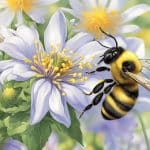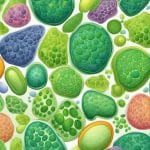Types Of Agave Plants
Agave plants are a diverse group of succulents that are native to hot and arid regions of the Americas. They are known for their striking appearance and ability to thrive in harsh conditions, making them a popular choice for both indoor and outdoor gardens. There are over 200 species of agave plants, each with their unique characteristics and uses.
Understanding the basics of agave plants is essential for anyone interested in cultivating these fascinating succulents. Agave plants are characterized by their fleshy leaves, which store water to help them survive in arid environments. They are also known for their striking rosette shapes and sharp spines, which serve as a defense mechanism against predators. Agave plants are typically slow-growing and long-lived, with some species living for up to 30 years or more.
Popular types of agave plants include Agave americana, Agave attenuata, and Agave victoriae-reginae, each of which has its unique appearance and growing requirements. Agave plants are also commonly used in landscaping and design, thanks to their striking appearance and low maintenance requirements. With proper care and attention, agave plants can be a beautiful and long-lasting addition to any garden or home.
Key Takeaways
- Agave plants are succulents that are native to hot and arid regions of the Americas.
- They are known for their fleshy leaves, striking appearance, and ability to thrive in harsh conditions.
- Popular types of agave plants include Agave americana, Agave attenuata, and Agave victoriae-reginae.
Understanding Agave Basics

Defining Agave and Its Habitat
Agave is a genus of succulent plants that belongs to the family Asparagaceae. These plants are native to arid and semiarid regions of the Americas, particularly Mexico and the Caribbean. They are known for their iconic leaves and striking appearance, which bring a dramatic presence and add a bold, geometrical nuance to landscape architecture.
Agave plants are drought-tolerant and can thrive in a variety of climates and soil types. They prefer well-drained soil and plenty of sunlight. Agave plants can grow in a range of habitats, from deserts to mountains and even tropical forests.
Agave Plant Characteristics
Agave plants are characterized by their rosette of leaves, which grow from a central stem. The leaves are thick and fleshy, and they can range in color from green to blue-gray. Some species have variegated leaves with white or yellow stripes.
Agave plants are monocarpic, which means they flower only once in their lifetime. The flowering stalk can grow up to 30 feet tall and is topped with a cluster of small flowers. After the plant flowers, it dies, but it produces offsets or “pups” that can be used to propagate new plants.
Agave plants are also known for their sharp terminal spike or ragged, toothy leaf margin, which can cause injury to humans and animals. It is important to handle these plants with care and keep them away from high traffic areas.
Overall, agave plants are a beautiful and unique addition to any garden or landscape. With their distinctive characteristics and wide range of species, there is an agave plant for every taste and style.
Popular Types of Agave Plants
There are numerous types of agave plants, each with its unique characteristics that make it perfect for certain situations. In this section, we will discuss some of the popular types of agave plants.
Agave Americana Varieties
Agave Americana is a large and impressive species of agave that can grow up to 6 feet tall and 8 feet wide. It is commonly known as the century plant because it takes several years to bloom. The leaves of Agave Americana are thick and fleshy, with sharp spines along the edges and a pointed tip. The plant produces a tall flower spike that can reach up to 30 feet in height.
One of the popular varieties of Agave Americana is the Blue Century Plant, which has blue-gray leaves and can grow up to 10 feet tall. Another variety is the Variegated Century Plant, which has green leaves with yellow stripes.
Unique Agave Species
Apart from Agave Americana, there are several unique species of agave that are worth mentioning. The Blue Agave, also known as Agave Tequilana, is famous for its use in tequila production. It has blue-gray leaves and can grow up to 5 feet tall.
The Octopus Agave, also known as Agave Vilmoriniana, is a smaller species of agave that has long, thin leaves that curl and twist like an octopus’s arms. The plant can grow up to 3 feet tall and is perfect for small gardens or containers.
The Queen Victoria Agave, also known as Agave Victoriae-Reginae, is a beautiful agave species with dark green leaves and white markings. It is slow-growing and can take several years to reach maturity. The plant can grow up to 2 feet tall and is perfect for rock gardens or as a specimen plant.
In conclusion, there are numerous types of agave plants, each with its unique characteristics that make it perfect for certain situations. Whether you are looking for a large and impressive plant or a smaller species for your garden or container, there is an agave plant that will suit your needs.
Cultivation and Care
Agave plants are relatively easy to care for and maintain. However, to ensure their optimal growth and health, it is important to provide them with the right growing conditions.
Soil and Watering Needs
Agave plants prefer well-drained soil that is slightly acidic, with a pH range of 6.0 to 7.0. It is important to avoid overwatering the plants, as this can lead to root rot. Instead, allow the soil to dry out between watering sessions. During the growing season, water the plants once a week, and reduce the frequency during the winter months.
Light Requirements and Placement
Agave plants require full sun to thrive, so it is important to place them in an area that receives at least six hours of direct sunlight per day. If grown indoors, it is important to place them near a south-facing window. It is also important to ensure that the plants have enough space to grow, as they can grow quite large.
Temperature and Climate Adaptations
Agave plants are hardy and can adapt to a wide range of temperatures and climates. However, they are not frost-tolerant, so it is important to protect them from frost during the winter months. In areas with colder climates, it is recommended to grow agave plants in containers that can be moved indoors during the winter months.
In terms of climate zones, agave plants are best suited for zones 8 to 11, which have warm to hot summers and mild winters. However, some species can tolerate colder climates and can be grown in zones 6 and 7.
Overall, agave plants are easy to care for and can provide a unique and dramatic addition to any garden or indoor space. By providing them with the right growing conditions, they can thrive and add beauty to any setting.
Agave in Landscaping and Design
Agave plants are a versatile addition to any landscape design. With their unique shapes, colors, and textures, they can add aesthetic value to any garden or outdoor space. They can be used as focal points, accent plants, or mass plantings to create a dramatic effect.
Aesthetic Contributions
Agave plants come in a wide variety of shapes, sizes, and colors, making them ideal for adding visual interest to any landscape. They can be tall and spiky, short and rounded, or somewhere in between. Some species have leaves that are blue-green, while others are variegated with stripes or spots of yellow or white.
The unique shapes and textures of agave plants can also create a sense of drama and intrigue in a garden. The spiky leaves and sharp edges of some species can add a sense of danger and excitement to an otherwise mundane outdoor space.
Companion Plants and Groupings
Agave plants can be used in combination with other plants to create visually stunning groupings. They can be planted in mass to create a bold statement or used as accent plants to draw attention to other features in the garden.
When selecting companion plants for agave, it is important to consider color, shape, and texture. Plants with contrasting colors and shapes can create a dynamic visual effect, while plants with similar textures can create a sense of harmony and unity.
In addition to their aesthetic contributions, agave plants are also low-maintenance and drought-tolerant, making them an ideal choice for busy homeowners or those living in dry climates. They can be planted in pots or in the ground, making them a versatile addition to any landscape design.
Propagation and Maintenance
Reproduction and Growth
Agave plants are relatively easy to propagate and maintain. The most common methods of propagation include growing agave cuttings from pups and bulbils, starting new plants from seeds, and using offsets. Agave plants produce offsets or “pups” as a way of reproducing, which can be easily separated and replanted. Once the mother plant reaches maturity and blooms, these small plants grow from the base of the parent plant. The time it takes for the mother plant to bloom varies depending on the species, with some taking up to 25 to 30 years to flower.
Growing agave from seeds is another viable method of propagation. Once the plant has flowered, the bulbils will form at the base of the plant, which can be used as propagating material once they become ready after growing a few inches tall, typically around six months after flowering begins. Agave seeds are relatively easy to obtain, and they can be sown in a well-draining soil mix. It is recommended to keep the soil moist but not wet during the germination process.
Common Pests and Diseases
Agave plants are generally pest-free, but they can still be susceptible to a few common pests and diseases. One of the most common pests that affect agave plants is the agave snout weevil. This pest feeds on the plant’s tissue, causing significant damage to the plant. Signs of infestation include wilting, yellowing, and dying leaves. To prevent infestation, it is recommended to keep the area around the plant free of debris and to avoid overwatering the plant.
Another common pest that affects agave plants is the agave mite. These pests feed on the plant’s tissue, causing yellowing and wilting of the leaves. To prevent infestation, it is recommended to keep the area around the plant free of debris and to avoid overwatering the plant.
Agave plants are also susceptible to a few common diseases, including root rot and leaf spot. Root rot is caused by overwatering the plant, which can lead to the plant’s roots becoming waterlogged and rotting. To prevent root rot, it is recommended to allow the soil to dry out between waterings. Leaf spot is caused by a fungal infection, which can be prevented by keeping the plant’s foliage dry and avoiding overcrowding the plants.






